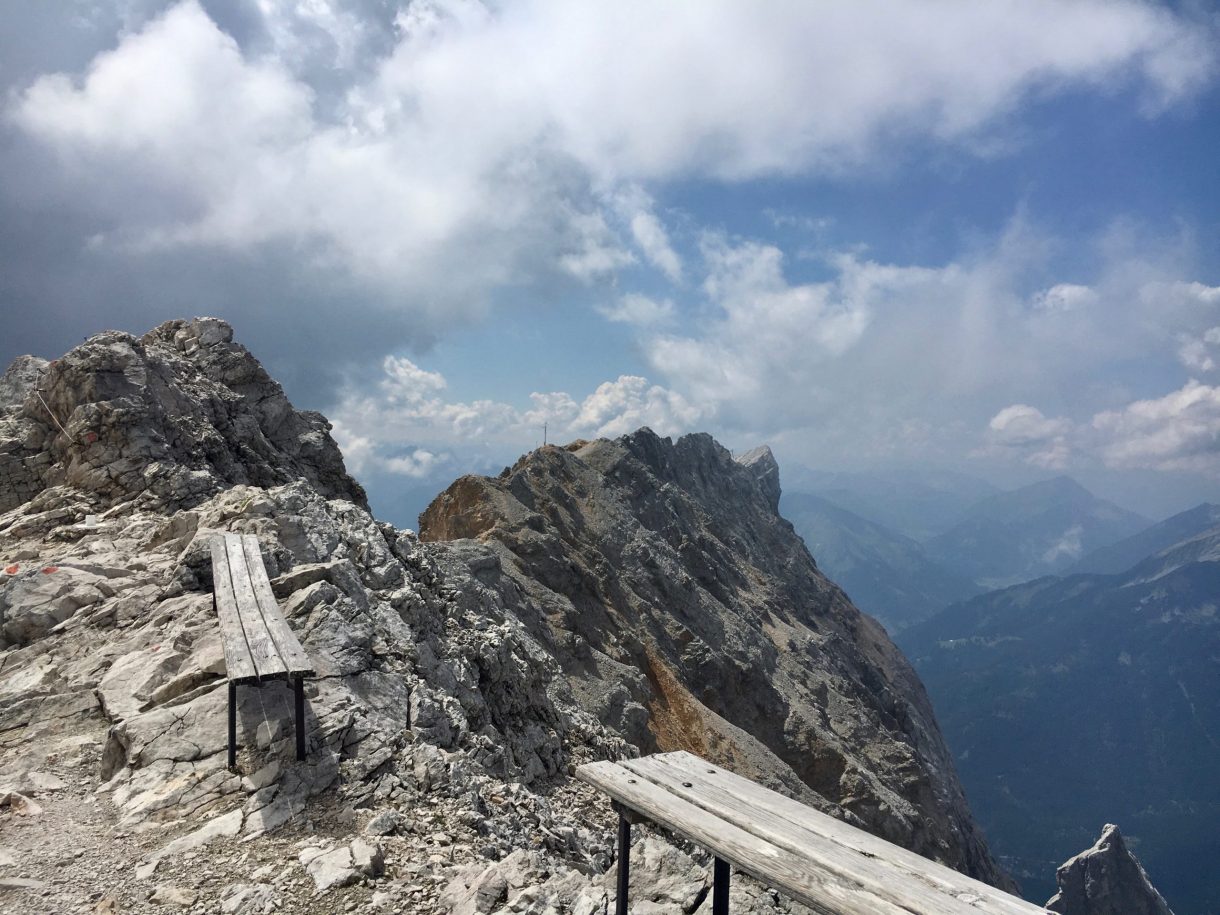
How to hike Zugspitze in a day [2024 Update]
Zugspitze is the highest mountain in Germany, sharing its summit with Austria. Promises of a 360° panorama from the top with views across Germany, Austria, Italy and Switzerland should put the Zugspitze summit on your must-do list in Germany. It’s usually recommended to hike the mountain over two or three days. Here, we’ll explain how to hike Zugspitze in a day!
WE WILL SHOW YOU THE BEST WAY TO HIKE ZUGSPITZE IN A DAY
There are five main routes up Zugspitze – two beginning in Germany and three in Austria. They vary greatly in difficulty and technical ability needed.
We opted for the Reintal Route, the longest but most scenic of the five. With the exception of a bit of a scramble towards the end, there are hardly any technical difficulties and this route should be manageable by anyone with a good fitness level. Details of other routes can be found here if you’re looking for more of a challenge.
WHAT ARE THE 5 ROUTES UP ZUGSPITZE?
There are several routes up Zugspitze. They vary in difficulty and require different levels of experience and equipment. Here are some of the main routes:
1.
Reintal Route: This is the easiest and longest route to the summit, starting from the town of Garmisch-Partenkirchen (Germany). The trail follows the Reintal Valley, which is a gradual and scenic ascent. The trail is well-marked and maintained. You can hike this trail to the summit of Zugspitze in a day. If you want to break up the journey, there are a few mountain huts along the way that offer food, drink, and a place to sleep.
2.
Höllental Route: This is the most popular and direct route to the summit, starting from the town of Hammersbach (Germany). The trail goes through the Höllental Gorge, which is steep and rocky in places, and requires some scrambling and climbing. The trail then continues along the Zugspitze Plateau and finally reaches the summit via a steep final ascent.
3.
Jubiläumsgrat Ridge: This is the hardest and most technical route to the summit, starting from the summit of Alpspitze (Germany). The trail follows a narrow and exposed ridge that requires advanced mountaineering skills and equipment. It is not recommended for inexperienced hikers or those with a fear of heights.
4.
Stopselzieher Route: This is a challenging and less-traveled route that starts from the town of Grainau (Germany). The trail follows a steep and rocky ascent to the summit, and it requires some scrambling and exposure to steep drops.
5.
Höllentalferner Route: This is a glacier route available in winter that starts from the Höllental Hut and requires advanced mountaineering skills and equipment, including crampons and ice axes. The trail goes through the Höllentalferner Glacier and has some steep sections and crevasses.
All of these routes start from Germany. You can also hike Zugspitze in a day from Austria, but we’ll leave that to the people who’ve done it!
THE BEST ROUTE TO HIKE ZUGSPITZE IN A DAY
The Reintal Route is the most popular route to hike Zugspitze in a day. The trail is mostly clear with the exception of a slightly scrambly bit towards the end (read on to learn more). We didn’t buy a physical map, instead using maps.me as a guide. We’ve recreated the route below.
Keep this map handy – you’re going to need it!
QUICK DIRECTIONS: REINTAL ROUTE
- Set off early from Garmisch Partenkirchen. Start point: The Olympic Jump.
- Follow signs for Partnach Gorge (Partnachklamm). The gorge sometimes floods, if this is the case, follow the signposted detour.
- It doesn’t matter whether you go through Partnachklamm or via the the detour. The paths will eventually meet. Follow the Partnach river to the Bockhütte (1052m), a small hut that makes a good break spot.
- The path will start climbing to the Reintalangerhütte (1370m).
- Keep to the obvious path. It will become very steep very quickly, and the trail may be difficult to find at times. Follow the red and white markers/poles and keep heading up, eventually reaching the Knorrhütte (2051m). A great place to take a break!
- From the Knorrhütte, follow the trail towards the ski station (2576m).
- Then scramble up the scree slope. No paths here, make your own way and be careful of people above and below you.
- Higher up the slope, climb the rocks, following the cables and footholds as a guide.
- Once you reach the ridge, follow it until you reach the the cable car station and summit.
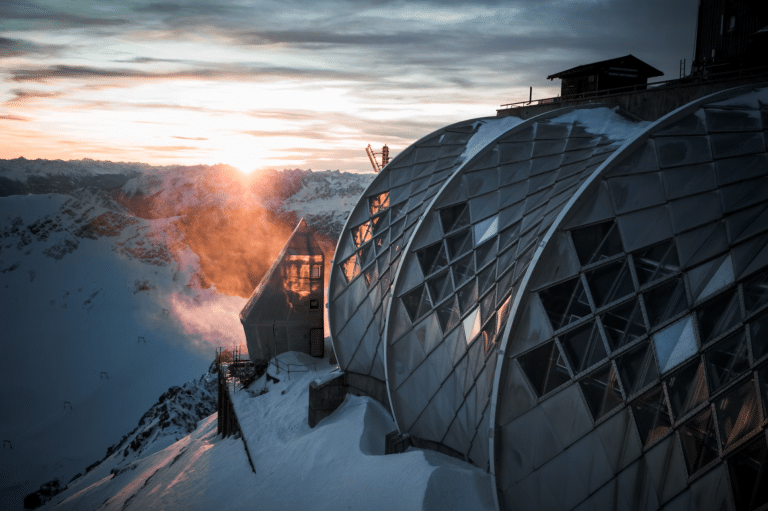
IN DEPTH DIRECTIONS
If you want to hike Zugspitze in a day it’s best to stay in the town of Garmisch the night before. Grab your boots and a head torch and leave your hostel in the early hours of the morning. We left Hostel der Athleten at around 5am. It was still dark but the cooler conditions were perfect.
The starting point for the Reintal Route is the distinctive-looking Olympic Ski Jump in Garmisch-Partenkirchen (730m). There, you can follow signs for Partnach Gorge (Partnachklamm). There is a small fee to enter the gorge but it is definitely worth seeing. If you arrive before 6am, as we did, you can usually pass for free as the gate is unmanned.
Partnach Gorge sometimes floods, but there is a signposted detour which follows a path over the gorge. This will add some time to your hike. We reached our first stop, Partnach-alm, just in time for sunrise.
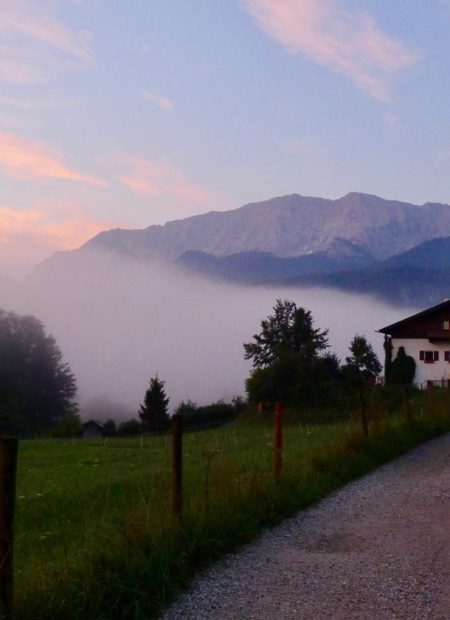
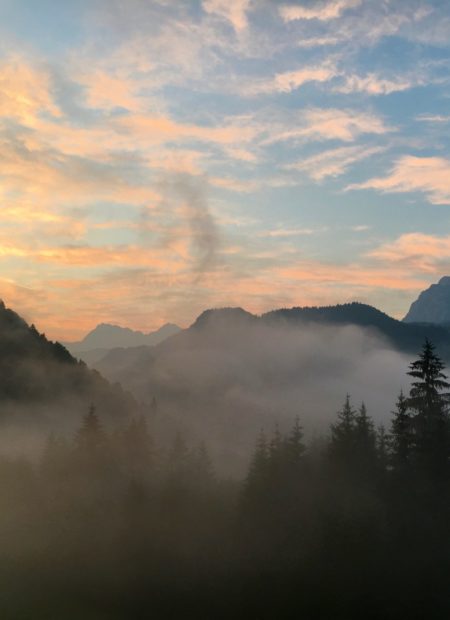
Keep following the path as it rises and falls, following the trail through the thick alpine forest along the banks of the Partnach River.
If you start before sunrise, the morning fog casts an incredible ghostly-blue appearance throughout the forest, creating an ethereal contrast between the lush green of the trees and earthy orange of the sun as it rose over the towering peaks in the distance. It’s beautiful.
This section of the trail is well-signposted and both routes eventually meet to follow the Partnach River to the Bockhütte (1052m). The easy mountain path then climbs a little to the Reintalangerhütte (1370m). When open, both mountain huts are a refreshing place to stop for a drink or a snack.
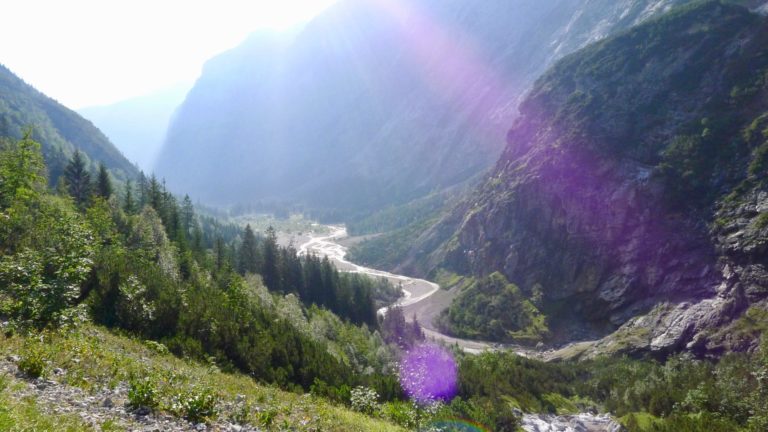
Continuing onward, the path becomes very steep, very quickly. However, you will soon be rewarded for your climb with incredible views. Remember to look back along the beautiful Rein valley and snap some photos. Fill up your bottle from some fresh natural springs continue on the steep incline to the Knorrhütte (2051m), a great place to stop for a well-deserved beer or cup of tea.
The section of trail both prior and following Knorrhütte is not very well signposted and can be difficult to find. There are red and white markers and poles marking the winter skiing trails. Other hikers often opt for this popular route and can be used to see the path ahead. Alternatively keep heading towards the summit and largest peak.
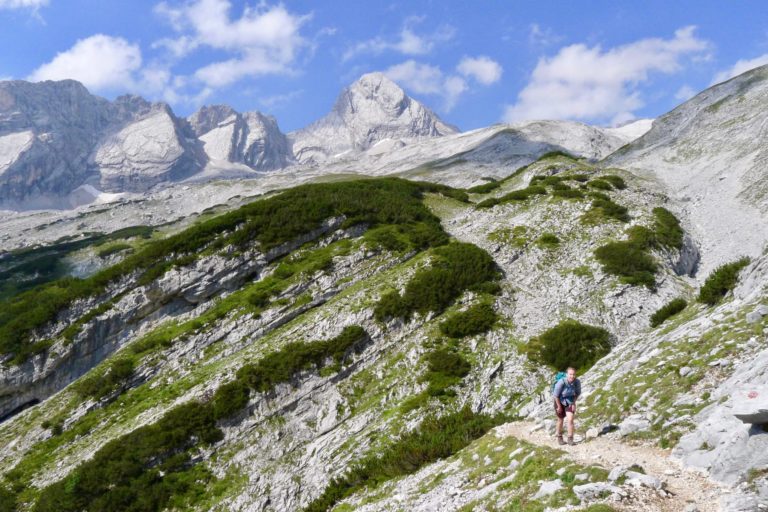
The approach to Knorrhütte
From Knorrhütte, follow the trail through several snowdrifts towards the Sonn-Alpin station (2576m),. The trail gets a bit harder for the final push up the summit, but you’re almost there!
The first section involves scrambling up a steep shale slope where every two steps forward will send you one step back. Watch out for people climbing above as they can send rocks tumbling down, which we narrowly avoided. Higher up the slope, a network of cables and small steel pegs provide footholds and handholds to climb up the rocky mountain face.
The views as you reach the ridge are unrivalled. The ridge forms the border between Germany and Austria and you can constantly cross between countries as the path winds upwards.

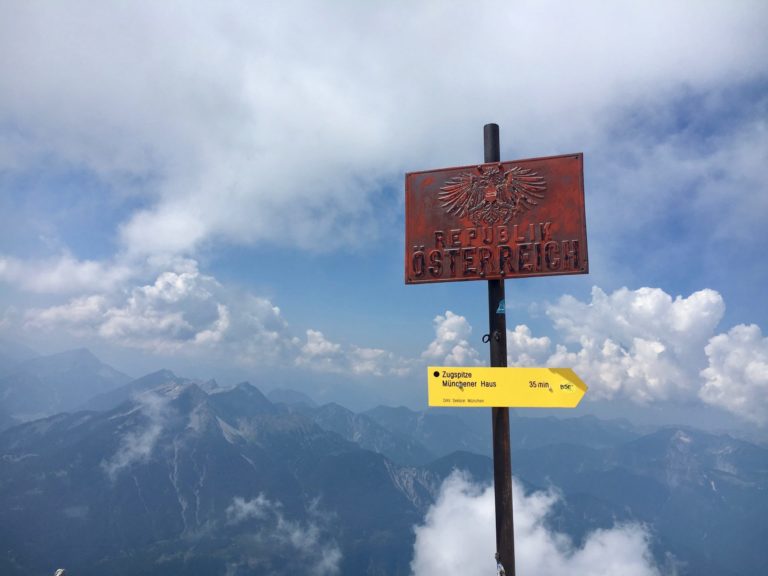
Almost at the summit
Although the ascent is beautiful, overtourism and commercialisation of the summit takes away a little of the joy upon reaching it.
Follow the trail to a large building on the summit, which houses a restaurant, shop and cable car station with 360° panoramic views for less adventurous tourists. This is easily reached by train from Garmisch-Partenkirchen and can get quite busy. We were met with shocked faces and several variations of “You HIKED all the way up? Insane…” by sightseers who had taken the easier route.
Having reached the summit, make sure to climb up to the gold cross marking the tallest point in Germany. This requires several steel ladders and cables plus no fear of heights. The views throughout the trek and at the summit were absolutely indescribable and well-worth the long hike.
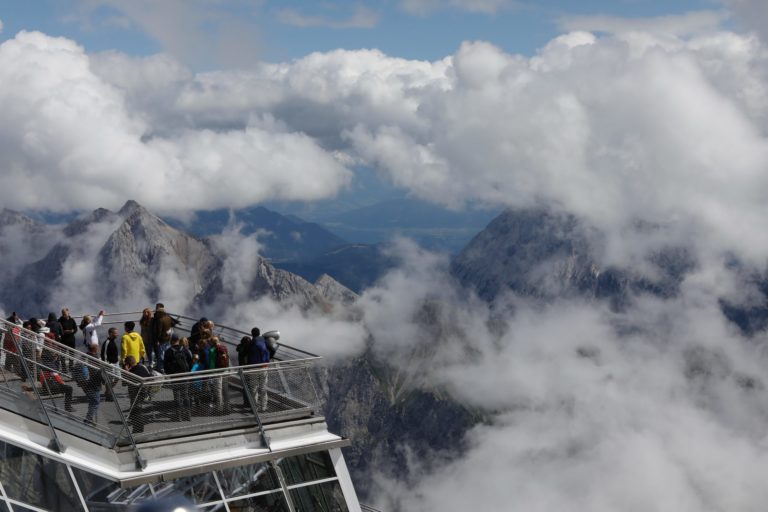
The viewing platform at Zugspitze Summit
When we did this hike, we started in Garmisch at 4:30 am, from a hostel near the trailhead. We reached the summit at 15:00 pm, but stopped for frequent water breaks, a breakfast picnic at Bockhütte, tea at Knorrhütte and countless photo opportunities along the way.
If you’re a fast hiker, don’t take picnic breaks, and are alright with a very very long day, you could hike up and down in the same day. Especially during the summer months, with longer days and finer weather.
But I highly recommend taking the whole day for this hike if weather/travel plans allow for it and taking the cable-car back down, as we did. If you want to hike both ways, it would be a much nicer experience to book yourself into one of the reasonably-priced mountain huts for a night.
FAQs
Q: Can you climb Zugspitze in a day?
A: Yes, it is possible to climb Zugspitze in a day, but it’s not an easy hike! You might want to start very early in the morning, or be prepared to hike one-way only.
Q: What’s the best route up Zugspitze?
A: That depends on what you’re looking for! The least technical hiking route up Zugspitze is the Reintal Route, which starts from the town of Garmisch-Partenkirchen and is the longest and most gradual ascent to the summit. If you’re looking for something more technical, check out the options at the top of this post!
Q: How long does it take to walk up Zugspitze?
A: That depends on you as an individual, but most people will take 8 – 10 hours
Q: How hard is it to hike the Zugspitze?
A: From a technical point of view, the Reintal Route is very easy for those with a decent level of fitness – it’s just long! If you’re looking for a challenge consider one of the more technical routes, or consider doing this hike in winter.
Q: Do you need a guide to climb Zugspitze?
A: You don’t need a guide, especially not for the Reintal Route. Those looking for a more challenging route might benefit from the expertise and equipment a guide would bring.
Q: How much does it cost to go up Zugspitze?
A: If you’re walking, it’s free! If you want to take the cable car, it’s around 30 EUR each way.
Q: What should I wear to hike Zugspitze?
A: Dress for the weather and be prepared for all eventualities! Wear comfortable, moisture-wicking clothing you can move in and bring layers so you can adjust to changing weather conditions. As usual, always pack a rain jacket. Sturdy hiking boots with good traction are a must! Sunglasses, sunscreen, and a hat are also recommended to protect from sun exposure. And don’t forget the snacks!
Follow our daily adventures on Facebook and Instagram
Disclaimer: The information and advice provided in this blog are the author’s opinions and based on their personal experiences. All information was accurate at the time of writing. However, things can change quickly, so always double-check current conditions and guidelines before setting out. Remember, your travels and safety are your own responsibility, and this blog can not be held responsible for anything that might happen on your adventures! Always exercise caution and good judgment. Oh, and don’t forget to get travel insurance! Happy travels!
This post may contain affiliate links (yay for transparency!) This means that I will earn a small commission, at no additional cost to you, if you click the link and choose to buy the product. I only link to stuff I have personally bought and found useful and never endorse crap. Your support helps keep the site going, thank you!
Alice
Alice is a UK travel blogger who advocates sustainable travel and being more eco-conscious on a budget. She loves coffee, her houseplants and summiting mountains.
You May Also Like

Hungry in Hungary: Your 2023 Guide to Veg-Friendly Hungarian Cuisine
January 7, 2023
The Green Guide to Wrocław
November 21, 2020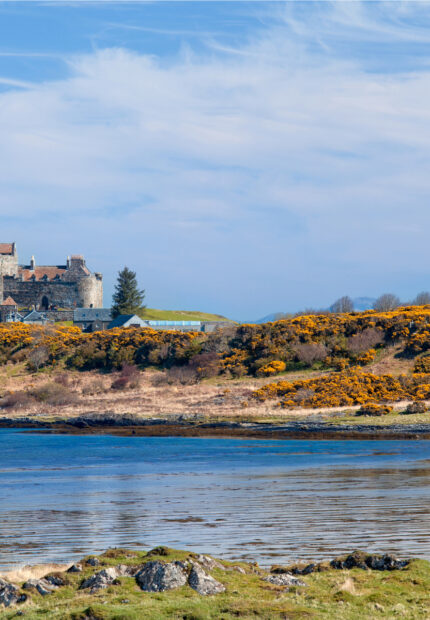
4 Comments
Chiến
Thank you for your sharing. I did it in 10 hours haha. It was a sunny day till 5pm. Wonderful.
Alice
Similar to us! Lucky that the weather stayed nice for you most of the day and glad you had fun! https://discoveny.com/wp-admin/edit.php?post_type=acf-post-type
Agnese
Dear, Alice! Thank you very much for taking the time and writing such a helpuf article abut hiking in Zugspitze. Me and my husband are planing to take a hike in the end of the april. We have some experience, but not a lot 😀 I have a question about Reintal Route, did I understand correctly – it is the easiest route? Is it possible to make hike shorter, around 10-12 km? Maybe we can start somewhere closer than The Olympic Jump, where also are spots to leave the car and start the hike? Or maybe there is some cable car that can take us closer to summit and we can start from there and have shorter hike (10-12km) ? If we reach the top is there any way to get down with cable car so we dont have to hike all the way down? Is there one cable car or there are several cable cars which goes down to different locations? Thanks 🙂
Alice
Hey! I’m really glad you found this useful. Yes, the Reintal Route is the easiest and ‘least technical’ route, so if you don’t have a lot of hiking experience this is probably the best option for you.
If you wanted to shorten the hike, there might be a few options. The mountain is a popular area for skiing, so there are a few cable cars running up to various points along the mountain. There’s a good map here: https://zugspitze.de/en/Our-mountain-worlds/Highlights/Zugspitze-Round-Trip
You could look at taking the Alpspitzbahn or Kreuzeckbahn cable cars up to one of two stations on the mountain and join the Reintal route from there, although I can’t speak from experience about how you’d do this. You can find some info about these cable cars here: https://www.grainau.de/en/alpspitze-kreuzeck-en
Hope this helps and happy hiking 🙂 Do pop back and let me know how you get on.